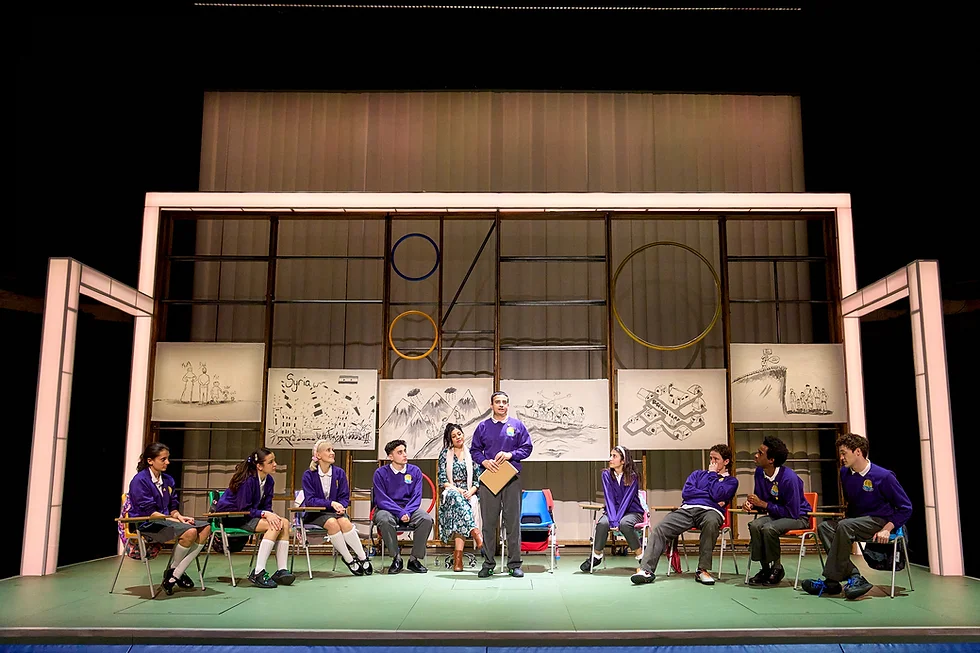Cambridge Arts Theatre, Cambridge – until Saturday 16th March 2024
Reviewed by Steph Lott
5*****
The goals of O’s Refugee Aid Team (ORAT) in the UK are simple. To raise awareness, funds, and goods for supported frontline teams, to lobby the UK government to safeguard every human being’s right to safe passage and sanctuary, and to mobilise communities of all backgrounds to help refugees however they can. Founded by Ojali Q Rauf, following the tragic death by drowning at sea of two-year-old Alan Kurdi, along with his brother and mother, ORAT surpassed itself in achieving those goals last night, judging by the impact of the performance of “The Boy at the Back of the Class” on the young audience. I have no doubt that this performance will have since been discussed at length and with passion by all those who witnessed it.
Onjali Q. Rauf’s acclaimed novel has been transformed into a captivating and thought-provoking stage production by the Children’s Touring Partnership. Nick Ahad’s adaptation and Monique Touko’s direction have brought to life a poignant story that tackles complex themes of displacement, prejudice, and the power of empathy and friendship.
The play revolves around the arrival of a new student, Ahmet (played with remarkable depth by Farshid Rokey), a refugee from Syria, in a London classroom. His silence and mysterious demeanour initially leave his classmates puzzled and wary. However, the inquisitive and compassionate Alexa (portrayed with infectious energy by Sasha Desouza-Willcock) takes it upon herself to unravel Ahmet’s story and help him assimilate into his new environment.
Rokey’s understated yet emotionally charged performance is a standout, conveying the trauma and resilience of a child forced to flee his homeland. His interactions with Desouza-Willcock’s Alexa are both heart-warming and heart-breaking, as they navigate the complexities of cultural differences and the weight of Ahmet’s experiences.
The ensemble cast, comprising young actors playing Alexa’s classmates, delivers impressive performances that capture the nuances of childhood curiosity, prejudice, and eventual understanding. Their individual arcs are well-defined, and their collective transformation from indifference to empathy is both organic and inspiring.
The minimalist yet ingenious set design, complemented by effective lighting and sound effects, allows the narrative to take centre stage. The use of multimedia elements, including projected animations and evocative soundscapes, enhances the immersive experience, transporting the audience between the classroom and Ahmet’s haunting memories of war-torn Syria.
While the subject matter is undoubtedly heavy, the production strikes a delicate balance between seriousness and moments of levity, ensuring that the message is accessible to its young audience without compromising its emotional depth.
“The Boy at the Back of the Class” is a poignant and timely reminder of the power of compassion and understanding in a world where displacement and prejudice are all too prevalent. It is a must-see production that not only entertains but also challenges its audience to confront their biases and embrace the richness of diversity.

